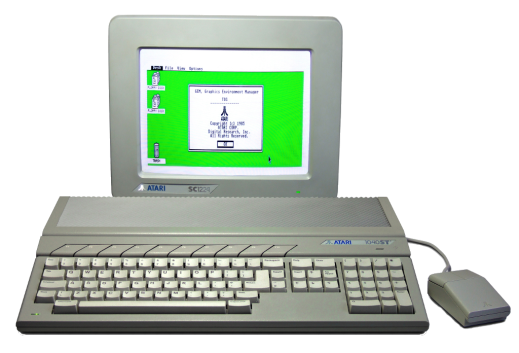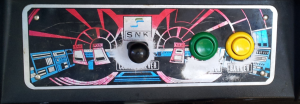The extremely inexpensive Raspberry Pi allows faithful emulation of Atari ST and STe machines, splendidly affirming Atari’s mid-1980’s slogan Power Without the Price; in this guide I cover the configuration and utilisation of RetroPie‘s Hatari emulator.
I have a great fondness for Atari‘s computers, having owned a 130XE before moving on to the 16-bit ST range; it was many years later that I discovered that the latter machines were largely the product of Commodore engineers, the true technological successor to the Atari 8-bit range being, through quirks of business and fate, the Amiga.
My stalwart 520STfm machine dutifully provided years of service in a broad array of roles, including: code development, primarily using Action! and GFA Basic; word-processing in 1st Word Plus; running inspiring demoscene productions; driving MIDI keyboards; and of course the inevitable core function as a gaming platform.
This guide has been written primarily for the Raspberry Pi implementation of Hatari, which for RetroPie 3.6 is the latest version, 1.9.0, released in September 2015. As the emulator has been compiled from the original source code virtually all of the following information will be equally applicable to the Windows, OSX, and other Linux platforms besides Raspbian.
Topics Covered
- Emulation Without a Safety Net
- A Note on Emulation Legality
- Installing the RetroPie Hatari Emulator
- Selecting RetroPie’s Hatari Emulator Version
- Initial Emulator Configuration
- Saving the Configuration
- Atari ST / STe Specific Keys
- Hatari Keyboard Shortcuts
- A Note on Using a Mouse
- External Links
- Related Posts

Emulation Without a Safety Net
RetroPie‘s emulators for classic computer systems do not implement the common functionality found in the RetroArch Core systems. For further details, please see the What is RetroArch? section in the post RetroPie system overview – software and hardware components, and the related article: RetroPie Emulation: RetroArch, Libretro, and the Power of the Options Menu
Hatari implements a native options menu which is accessed via a preset function key, F12, and navigated only via mouse (thus requiring both a USB or Bluetooth keyboard, and a mouse).


